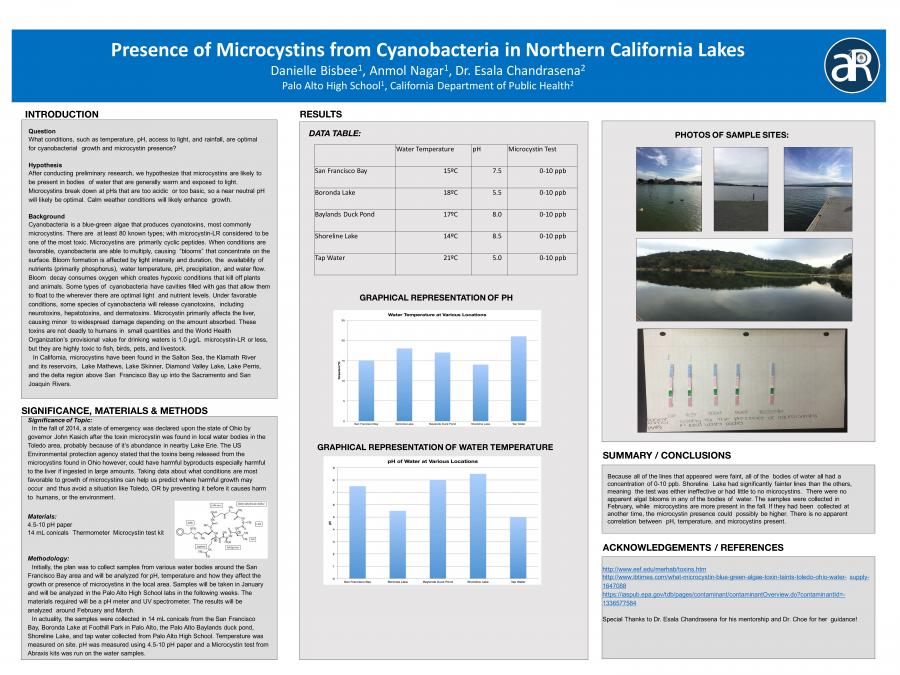Presence of Microcystins from Cyanobacteria in Northern California Lakes by Danielle B. & Anmol N.
Presentation
Summary
What conditions, such as temperature, pH, access to light, and rainfall, are optimal for cyanobacterial growth and microcystin presence? After conducting preliminary research, we hypothesize that microcystins are likely to be present in bodies of water that are generally warm and exposed to light. Microcystins break down at pHs that are too acidic or too basic, so a near neutral pH will likely be optimal. Calm weather conditions will likely enhance growth....Cyanobacteria is a blue-green algae that produces cyanotoxins, most commonly microcystins. There are at least 80 known types; with microcystin-LR considered to be one of the most toxic. Microcystins are primarily cyclic peptides. When conditions are favorable, cyanobacteria are able to multiply, causing “blooms” that concentrate on the surface. Bloom formation is affected by light intensity and duration, the availability of nutrients (primarily phosphorus), water temperature, pH, precipitation, and water flow. Bloom decay consumes oxygen which creates hypoxic conditions that kill off plants and animals. Some types of cyanobacteria have cavities filled with gas that allow them to float to the wherever there are optimal light and nutrient levels. Under favorable conditions, some species of cyanobacteria will release cyanotoxins, including neurotoxins, hepatotoxins, and dermatoxins. Microcystin primarily affects the liver, causing minor to widespread damage depending on the amount absorbed. These toxins are not deadly to humans in small quantities and the World Health Organization’s provisional value for drinking waters is 1.0 µg/L microcystin-LR or less, but they are highly toxic to fish, birds, pets, and livestock....

